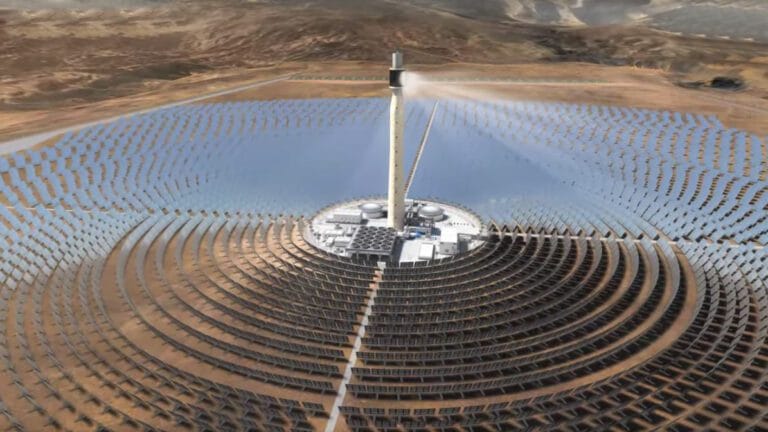The global concentrated solar power (CSP) market is expected to register an annual growth of 5.62% until 2035, according to a study by Wise Guy Reports. This technology, still a minority compared to photovoltaics, could see its revenue rise from $6.94 billion in 2025 to $12 billion by 2035. Morocco, already at the forefront with its Ouarzazate solar complex, is among the countries best positioned to benefit from this dynamic.
Continuous production through thermal storage
Unlike photovoltaic solar power, which generates electricity only in the presence of sunlight, CSP relies on concentrating light through mirrors or lenses, heating a heat transfer fluid. This fluid, often molten salt, allows for heat storage to generate electricity even after sunset. This deferred production system is a key asset for the stability of electrical grids, a crucial issue in the context of the gradual phase-out of fossil fuels.
Public policies supporting CSP
The rise of CSP is largely supported by climate policies adopted at the international level. Many countries—Spain, United Arab Emirates, China, and Chile—have integrated this technology into their long-term energy plans. Morocco, for its part, has established itself as a pioneer on the African continent thanks to its energy independence strategy and large-scale CSP projects, such as the Noor I, II, and III plants, coordinated by MASEN.
Technological challenges and integration into the grid in focus
The future of CSP depends on its ability to effectively integrate into electrical grids, adapting to consumption needs and responding to demand peaks. Hybrid solutions, combining CSP, gas turbines, and photovoltaics, are already being studied and tested in several countries to maximize flexibility and limit weather-related risks.
Despite still high installation costs and dependence on direct sunlight, CSP is appealing due to its sustainability, long-term yields, and low environmental impact. It is gradually establishing itself as a credible lever for energy transition.
With its experience and technical capabilities, Morocco could play a key role in the regional development of this technology and become a reference platform for concentrated solar power in Africa.
With Barlamane


